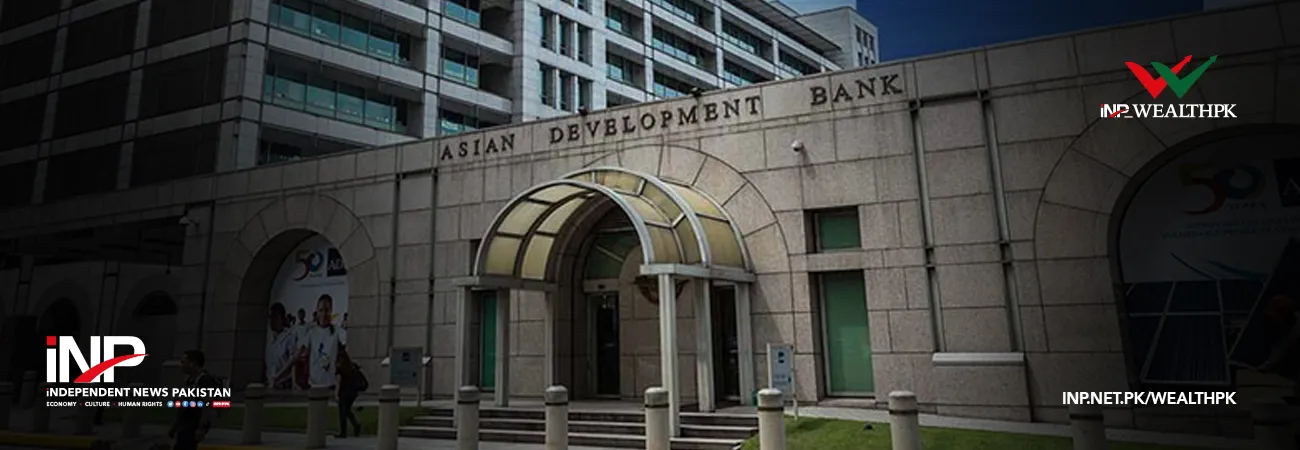INP-WealthPk
By Abdul Wajid Khan ISLAMABAD, April 27 (INP-WealthPK): The structural impediments to enhancing the flow of financing to the real economy, particularly the underserved segments, is hampering growth, and that concerted efforts are required by the government to tackle these challenges, according to the World Bank’s latest biannual report on Pakistan Development Update for April 2022. These impediments include: 1) extensive government borrowing from the financial sector; 2) growing but still limited financial inclusion and low domestic saving that limits the resources availability to the private sector; 3) market failures in the form of inadequate financial infrastructure leading to informational asymmetries; 4) a weak insolvency and creditor-rights regime; 5) underdeveloped capital markets; 6) high informality and low financial literacy; and 7) high cost of finance and an emphasis on traditional forms of collateral. The World Bank report says that the financial sector is not fulfilling its potential in financing the private sector and focusing instead on providing financing to the government. Credit is also concentrated in the corporate segment, leaving other critical segments and sectors such as small and medium enterprises (SMEs) underserved. However, there are bright spots, such as the microfinance sector, the report notes, but these sub-sectors remain smaller than the dominant banking sector, despite significant potential for growth and financing the real economy in the immediate term. The government, regulators, and other stakeholders need to make concerted efforts to remove the structural impediments to ensure enhanced flow of finance to the private sector in the medium to long-term, the report emphasises, but notes that the solutions to many of these challenges are complex and necessitate a whole-of-system approach. The report presents key recommendations for addressing some of the challenges currently preventing greater flow of financing to the private sector in Pakistan. It calls for reducing government’s usage of the domestic markets’ financial resources to encourage stronger flows to the private sector and increasing outreach, investor awareness, and financial literacy to equip businesses and households with the information required to access the financial sector and the products offered by it. The reports emphasises the need for pursing financial inclusion policies to tap into the informal savings of the population, particularly by leveraging newly-developed digital channels and improving the business climate and incentives to facilitate SME growth, and automating the process of business registration and consolidating multiple registration processes into a digital one-stop shop. The World Bank report also asks for addressing legal, policy, and institutional hurdles that currently limit the development of the market for credit information (including data sharing, data privacy, integration of platforms etc.); strengthening banks’ capital base to provide space for enhanced lending to riskier segments; and providing time-bound incentives for strategic sectors and large corporates to enter the bond market to help develop the market, particularly by promoting listing of large corporates with significant debt requirements; developing and diversifying the investor base by equipping institutional investors with appropriate investment capacity and skills to invest in capital markets to ensure they diversify investments beyond sovereign paper and real estate. The report recommends supporting evolution of capital markets by encouraging book-building of semi-autonomous bodies, reducing tax-driven distortions between asset classes, and developing a vibrant secondary market for government securities. It calls for optimising delivery of government’s social transfers, including Benazir Income Support Programme (BISP), leveraging and integrating the micro-payment gateway (RAAST) to facilitate outreach and inclusion; digitising government payments and collecting flows at the federal and provincial levels; establishing a central coordinating mechanism to support a holistic approach towards building an enabling environment for risk capital to ensure an industry-driven legislative framework for risk capital; improving the regulatory and taxation framework for international investors and supporting stronger incentivisation for local funds and crowding in institutional investors such as pension funds and insurance companies that can play a catalytic role in broadening and diversifying the financing base for risk capital through potential revision of the regulatory and policy regimes. The World Bank report asks for supporting product innovation and outreach for growth of microfinance portfolio through more rigorous client-centric product development and customer outreach. It recommends digitising all facets of microfinance business models, including internal processes and client interfaces. It seeks to establish a coordinating unit that can serve as a depository for development finance (DF) initiatives such as Kamyab Pakistan programme, both at the federal and provincial levels, in addition to supporting the monitoring and evaluation of the DF interventions to limit their distortionary impact. The report recommends consolidating and harmonising existing instruments and institutions that characterise the development finance landscape after an effective review based on a clear mandate, governance, and rules of engagement.













